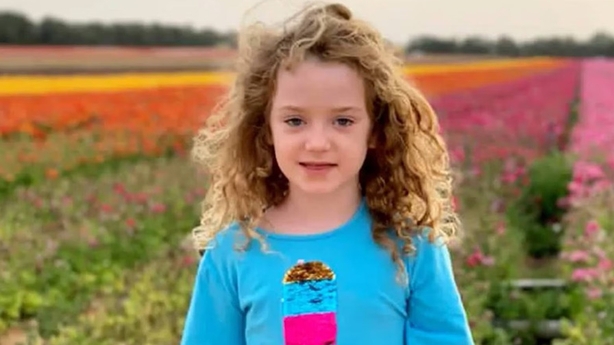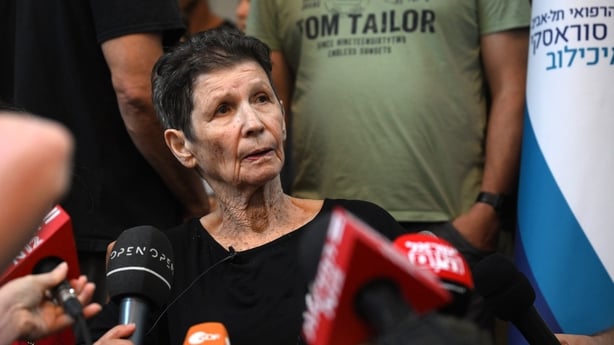The Israeli government has voted to back a deal to release some of roughly 240 Israeli hostages held by Hamas in Gaza in exchange for a multi-day truce and the freeing of a greater number of Palestinian prisoners in Israel.
Here is what we know about the hostages.
Who are the hostages?
Gunmen from the Palestinian militant group Hamas took about 240 hostages and killed 1,200 people when they raided Israel on 7 October, according to the Israeli government.
The hostages were from communities, including collective farms, called kibbutzim and military bases in southern Israel as well as people attending an outdoor music festival.
In addition to Israeli citizens, more than half the hostages held foreign and dual citizenship from some 40 countries including the US, Thailand, Britain, France, Argentina, Germany, Chile, Spain and Portugal, Israel's government has said.
Also believed to be among the hostages is the nine-year-old Irish-Israeli girl, Emily Hand.

According to Israeli media and the Israeli government, up to 40 hostages being held are children, including a 10-month-old baby and pre-schoolers.
Also among those taken were soldiers, elderly people and people with disabilities.
What has happened to the hostages?
Hamas has to date released only four captives: US citizens Judith Raanan, 59, and her daughter, Natalie Raanan, 17, on 20 October, citing "humanitarian reasons," and Israeli women Nurit Cooper, 79, and Yocheved Lifshitz, 85, on 23 October.
Israeli forces freed one hostage, Ori Megidish, a soldier, in their ground invasion of Gaza on 30 October.
The Israeli military said earlier this month that it recovered the bodies of two hostages in Gaza City, including 19-year-old soldier Noa Marciano.
The armed wing of the Palestinian militant group Islamic Jihad, which participated in the 7 October raid with Hamas, announced yesterday the death of another Israeli hostage but did not identify the person.
Where are the hostages being held?
Hamas has said it has hidden the captives in "safe places and tunnels" in Gaza. Israel says the group has a vast underground network where it stores weapons, commands operations and uses tunnels to move its fighters.
Ms Lifshitz, an 85-year-old grandmother who was freed by Hamas, said that after she was seized, she was taken into underground tunnels that she compared to a spider web.

The Israeli military claimed it found evidence that some hostages were held at or under hospitals.
The Israel Defense Forces also claimed on Sunday that Ms Marciano, the soldier whose body was recovered, was killed by Hamas within Al Shifa hospital. The military released video that it said also showed militants forcing two hostages into the hospital on 7 October.
What have conditions been like for hostages?
Ms Lifshitz said her captors separated hostages into small groups. She said she and a few others with her slept on mattresses on the floor of the tunnels. Doctors provided care and Hamas ensured conditions were hygienic, she said.
In a video released by Hamas in October, a 21-year-old French hostage was shown having her injured arm treated by a medical worker.
Hamas released another video in October that showed three women hostages denouncing Israeli Prime Minister Benjamin Netanyahu. He said they were used for "cruel propaganda".
How have Israelis reacted?
Family members and thousands of supporters have pressured the Israeli government to prioritise freeing the hostages, fearing they could be killed in Israel's retaliatory assault on Gaza.
A five-day march culminated on Saturday with some 20,000 people on the main Tel Aviv-Jerusalem highway calling on the government do all they can to free the captives. Many Israelis blame the government for being blindsided by the Hamas assault.
Read more:
Israel and Hamas agree truce in hostage release deal
Explainer: What happens now after Israel-Hamas strike deal
